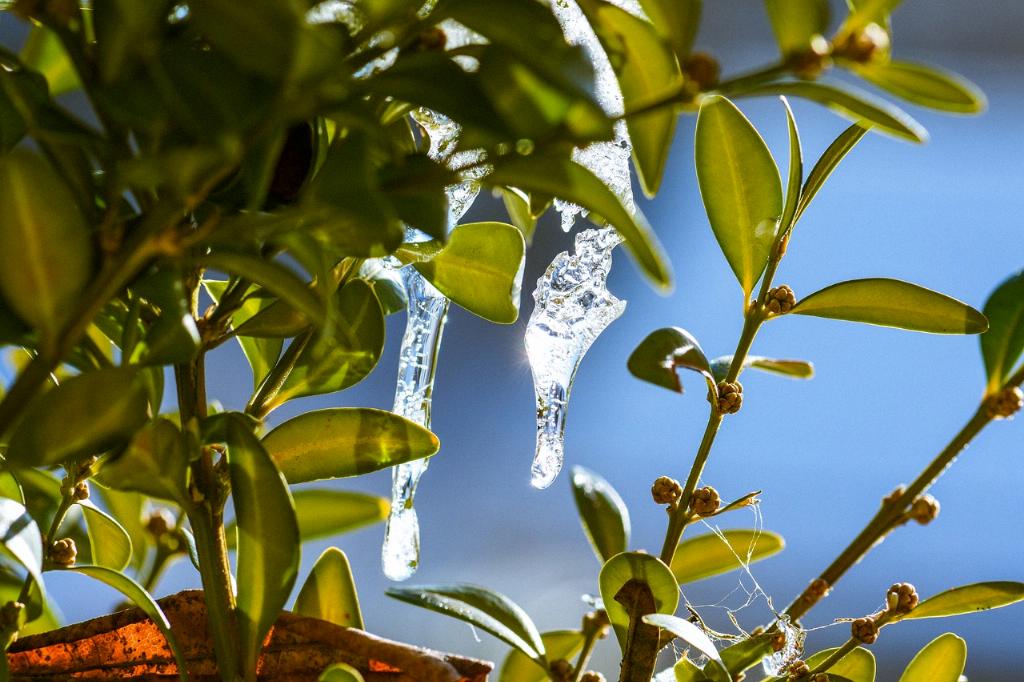Boxwoods are popular ornamental shrubs known for their lush evergreen foliage and versatility in landscaping. These plants are prized for their ability to maintain their vibrant green color throughout the year, providing structure and elegance to gardens, hedges, and landscapes. However, one common issue that can plague boxwoods is browning of their leaves, which can be a cause of concern for plant enthusiasts.
Common Reasons for Boxwoods Turning Brown
When boxwoods start to exhibit brown leaves, it can be indicative of underlying issues that need to be addressed promptly. The two main culprits behind brown boxwoods are soil-borne diseases, particularly Phytophthora root rot and English boxwood decline. Phytophthora root rot affects various boxwood species, including American boxwood, English boxwood, and littleleaf boxwood.
Overwatering and Poor Drainage
Overwatering is a common mistake that can lead to root rot in boxwoods. Poor drainage exacerbates the problem, as stagnant water around the roots creates a conducive environment for disease development. Excess moisture deprives the roots of oxygen, causing them to suffocate and eventually turn brown.
Underwatering and Drought Stress
On the flip side, underwatering can also contribute to boxwoods turning brown. Drought stress causes the leaves to wilt and discolor, resulting in unsightly brown patches. During periods of drought, it’s essential to ensure that boxwoods receive an adequate amount of water to prevent dehydration and leaf damage.
Pests and Diseases
Boxwoods are susceptible to a range of pests and diseases that can impact their health and appearance. Common pests like boxwood mites, boxwood leafminers, and boxwood psyllids can cause leaf discoloration and browning. Additionally, fungal diseases such as Volutella blight and boxwood blight can also lead to brown foliage in boxwoods.
Environmental Stressors
Environmental factors like extreme temperatures, harsh sunlight, and air pollution can stress boxwoods and result in leaf browning. Exposure to winter winds or intense summer heat can damage the foliage and cause it to turn brown. Shielding boxwoods from extreme weather conditions can help mitigate the impact of environmental stressors.
Improper Pruning Techniques
Incorrect pruning practices, such as overzealous trimming or using dull tools, can harm boxwoods and lead to browning of the leaves. Pruning at the wrong time of year or cutting back too aggressively can weaken the plants and leave them vulnerable to stress and disease. Employing proper pruning methods is crucial for maintaining the health and vitality of boxwoods.
Tips for Preventing Boxwoods from Turning Brown
To keep boxwoods looking lush and green, there are several preventive measures that can be implemented. Maintaining proper soil drainage, watering consistently but not excessively, monitoring for pest infestations, providing adequate sunlight, and practicing prudent pruning techniques are essential for preserving the health and appearance of boxwoods.

Conclusion
In conclusion, understanding the reasons behind boxwoods turning brown is key to addressing the issue effectively. By identifying potential stressors, practicing diligent care routines, and promptly addressing any signs of decline, it is possible to keep boxwoods thriving and vibrant in your landscape. With the right knowledge and proactive maintenance, you can enjoy the beauty and elegance of healthy boxwoods year-round.
